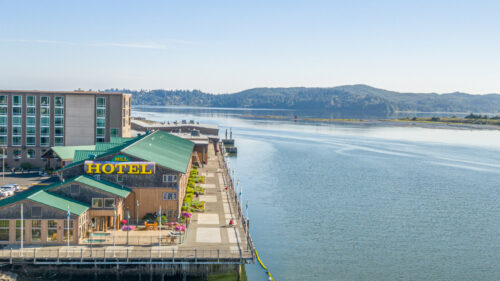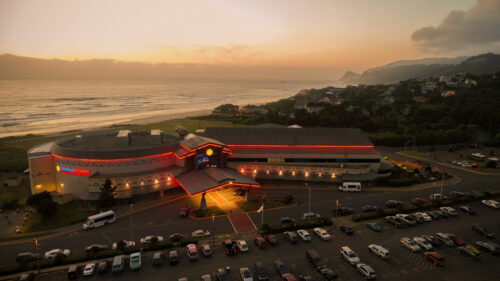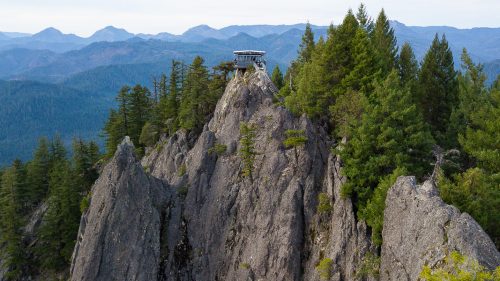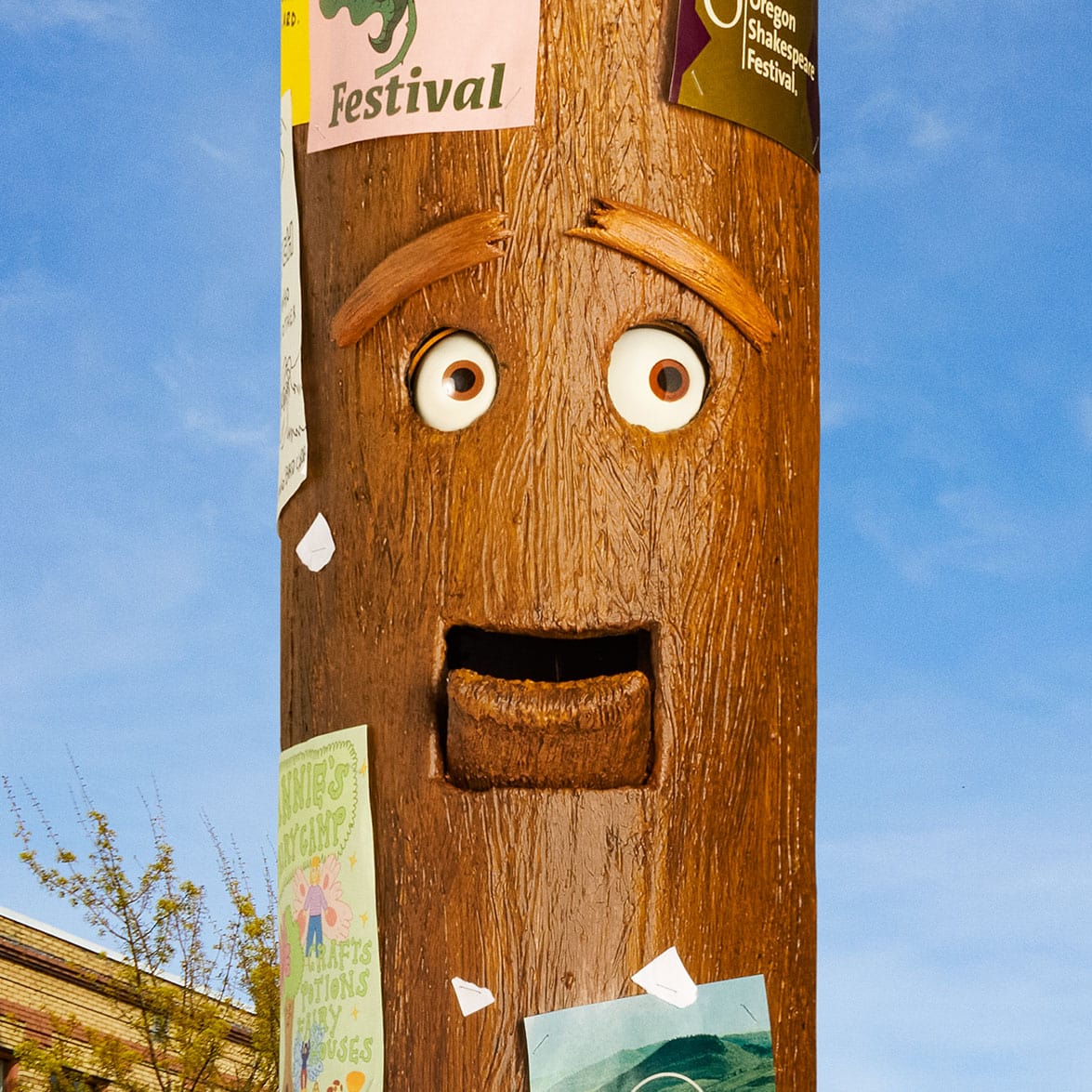Visitors to the waterways of Oregon’s Central Coast are sure to find abundance — think towering conifers, gleaming shellfish, blooming plants and splashing fish. What they may not know, however, is that for thousands of years this abundance has been intentionally cultivated by the original inhabitants of the Siuslaw, Lower Umpqua and Coos watersheds.
Recognized by the federal government as the Confederated Tribes of Coos, Lower Umpqua and Siuslaw Indians, these original inhabitants are one of Oregon’s nine Indigenous nations, and they live in and steward the same rivers, tidal flats, forests and fields as their ancestors have for thousands of years.
In addition to the Pacific Ocean, the Confederated Tribes of Coos, Lower Umpqua and Siuslaw Indians‘ original territory consists of close to 2 million acres of shorelines, rivers, lakes, estuaries and mixed forests. This land fosters a complex and thriving human culture with games, ceremonies and celebrations that live on in the lives of Tribal citizens.
Living on Oregon’s Central Coast from periods of pre-contact abundance through sad times of destruction by a rapidly expanding United States, the Tribal citizens are devoted to reconstruction and renewed stewardship today. And at the center of life for these original inhabitants is water.
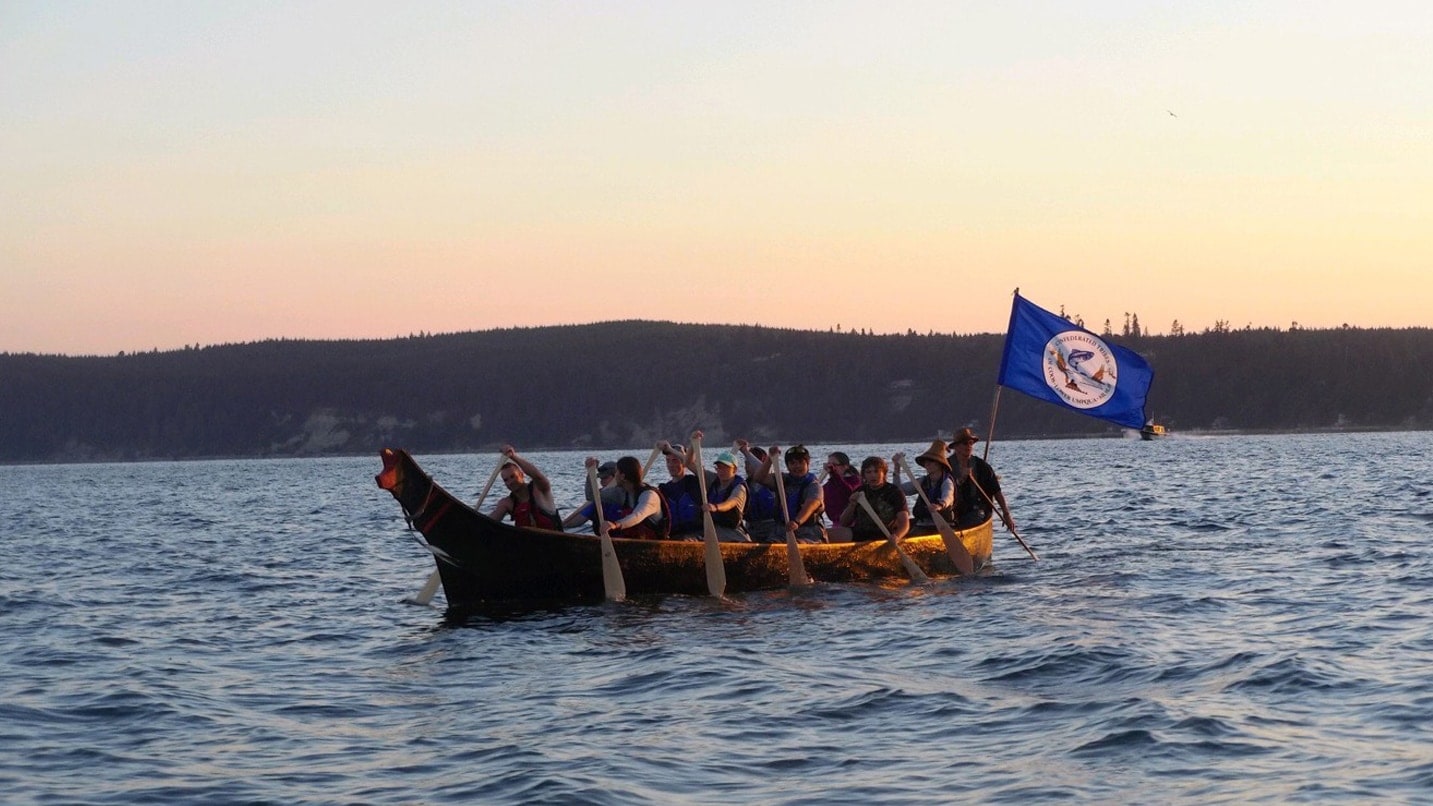
Water Is Life
“Each river has its own personality,” says Jesse Beers, the Tribes’ cultural stewardship manager. Highprow canoes are still frequently used by Tribal citizens today to explore those traditional waterways. Known as aluudaq in Tribal languages Hanis and Miluk, they are designed to endure rough coastal waters. Carved by Pacific Coast craftspeople from trunks of massive western red cedars, the canoes are owned communally and used for races, visits to sacred sites and their annual Canoe Journey.
Learning to paddle the 900-pound canoes long distances is a metaphor for life, Beers says. “When you’re in tune with a crew, it’s like the canoe is its own being. We are living beings, the tree is a living being, and when those two combine, it creates a canoe as a living being.” Through paddling canoes, Tribal youth learn to follow the vision of an experienced steersperson through complex waters. In doing so successfully, Beers says, they learn important lessons on being a good citizen.
Abundance and Broken Promises
This connection to watersheds drives many Tribal members, including Beers, to active involvement in conservation efforts. Tribal stakeholders are engaged with projects to restore complex river channels and estuaries to preindustrial health.
“When many folks think about Native peoples on the landscape, they think, ‘Man, it must have been so difficult for them to survive,’” Beers says. “But we weren’t just surviving. We were thriving, and managing the lands for abundance.”
Like for many Indigenous nations in the United States, the arrival of European culture brought famine, death, and cultural and ecological destruction. The mighty conifers that once towered near the ocean were harvested for timber; aquatic life such as the lamprey eel were nearly obliterated and the mighty salmon runs of the Siuslaw — second only to the Columbia — were decimated. Starting in the 1800s, industrialized agricultural practices called for straightening streams and drying up wetlands to move logs more efficiently to sawmills and to irrigate farmland.
As the incoming settlers were abusing the natural abundance, the promises the federal government made to the original inhabitants were broken. The Indigenous people of the three watersheds were decimated and displaced by the young United States, but not destroyed. In 1916 the three nations of the Coos, Lower Umpqua and Siuslaw came together and formed their Tribal government but were terminated of federal status in 1954. In 1984 this recognition was restored by the federal government after decades of legal action by the Tribes.
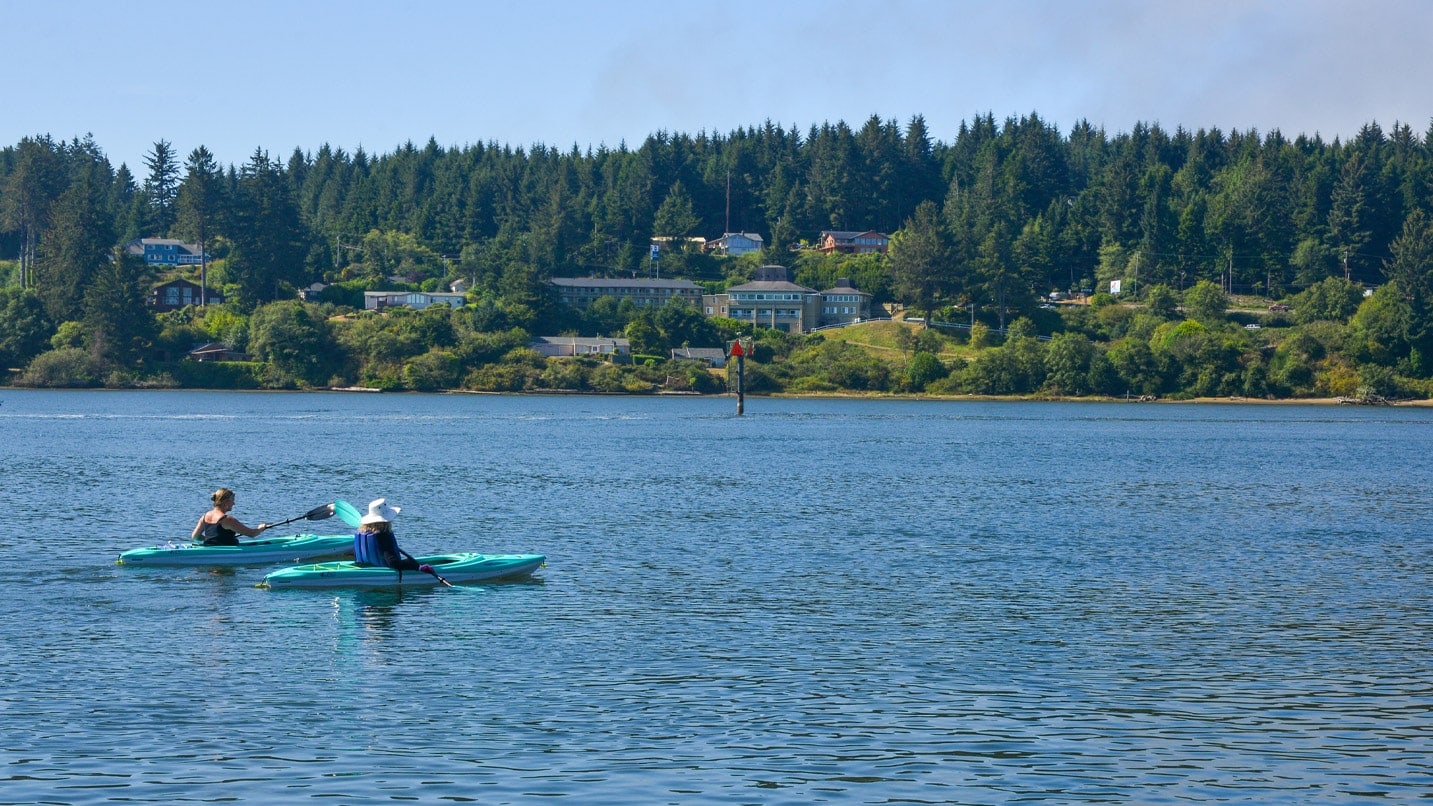
A Sustainable Future
Today Tribal stakeholders are engaged with projects to address decades of destruction and restore the abundance they once cultivated so successfully. To improve water quality and salmon habitat, the Tribes work with local and federal organizations such as the Siuslaw Watershed Council and the United States Environmental Protection Agency on a management plan. A coho-restoration project with the National Oceanic and Atmospheric Administration reintroduces large woody debris (like mature tree trunks) to the North Fork of the Siuslaw River.
Traditional ecological knowledge, as explained by Beers, is a mix of science and spirituality. Through thousands of years of practice and observation, seasonal ceremonies and oral history, Tribal communities cultivate a relationship to native plant and animal species. For example, blue camas, a plant with a nutrient-rich, edible bulb, is harvested as the flowers are fading, so that seeds still remaining on surrounding plants can fall into freshly dug soil. By this practice, the plant population is spread and maintained at a healthy level.
The Tribes’ annual salmon ceremony is a spiritual practice that honors the wealth of life the fish run supports, but it is also a practical sustainability model. The ceremony, which begins when the first salmon is caught that season, traditionally allows time for enough fish to travel upstream to spawn in seasonal streams and support their population before harvesting begins in full swing.
“Abundance is a mindset,” Beers says. And the Tribes intend to continue their history of stewardship and managing the land for the abundance of future generations.
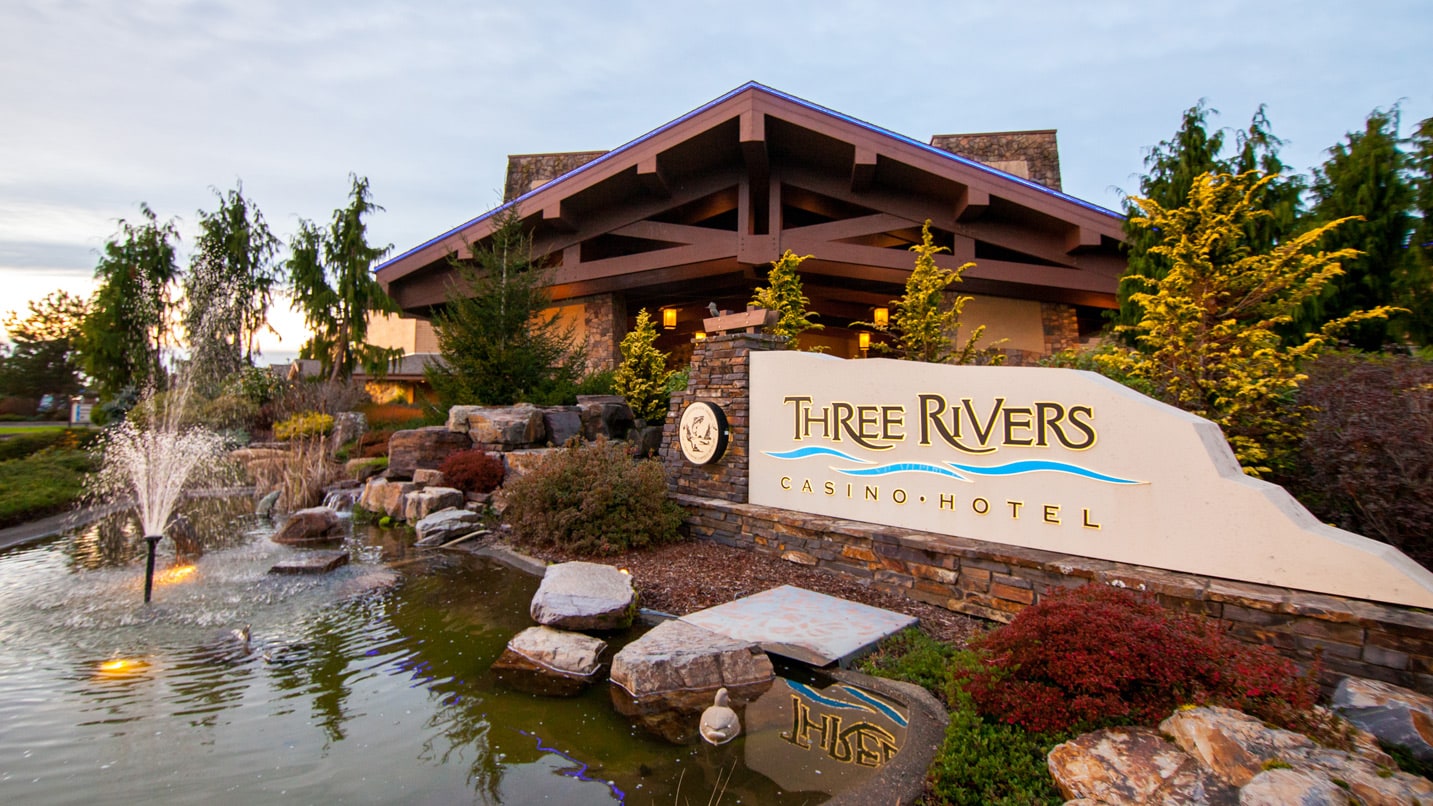
Visiting Tribal Lands
Before Tribal citizens land their canoes on the shores of other Tribal nations, they raise their paddles and signify that they come hiis haiyach — with a good heart and intentions. Between the cities of Florence and Coos Bay, there are ample opportunities for visitors to Oregon’s Central Coast to experience Tribal lands and Tribal-owned businesses.
Seated near where the Tribes’ traditional waterways — the Siuslaw, the Umpqua and the Coos rivers — meet the ocean is the Three Rivers Casino Resort. The resort offers visitors a full-service experience with a variety of casino games, an award-winning hotel and three different restaurants. Visitors can grab a burger and brew at Blue Bills Sports Bar or dine on finer fare like roasted quail at the Bonfire restaurant. A portion of the resort’s proceeds goes to philanthropic projects.
Nestled near the bank of the Siuslaw River, the resort is just a short walk away from downtown Florence and the sandy beaches and dunes the town has to offer. Traditional art and artifacts grace the interior of the resort, and natural dunes and coastal forest surround the exterior. Several county parks, such as Munsel Creek, offer nearby hiking.
For visitors looking for some tee time, the Tribal-owned Ocean Dunes Golf Links in Florence has 18 holes and great views of Oregon’s Central Coast environment. The unique layout of the course, with narrow sections and unexpected turns between natural dunes and coastal forest, offers a challenging and exhilarating golf experience. Book your tee times on their website.
Exploring Tribal Waterways
With the abundance of waterways in Tribal traditional lands comes an abundance of opportunity to explore. Near Florence, visitors can rent kayaks at Siltcoos Lake Resort to paddle nearby Siltcoos Lake and Siltcoos River, or navigate the 30 river miles of the Siuslaw Water Trail, a section of the Siuslaw River that has detailed maps for paddlers. There are 3-mile loops to paddle close to town as well as 17-mile adventures farther upstream.
Visitors can also experience the layered history of nearby Tahkenitch Lake. What was once a saltwater estuary with layered Tribal history — some home sites were radiocarbon dated to 10,000 years old — became a freshwater lake after encroaching sand dunes sealed it off from the ocean. Visitors can explore hiking trails, launch boats and stay at wooded campgrounds around the 2,000-acre lake within the Siuslaw National Forest.
Whatever you choose, the Confederated Tribes of Coos, Lower Umpqua and Siuslaw Indians encourage you to enjoy the area’s history and abundance hiis haiyach — with a good heart.
